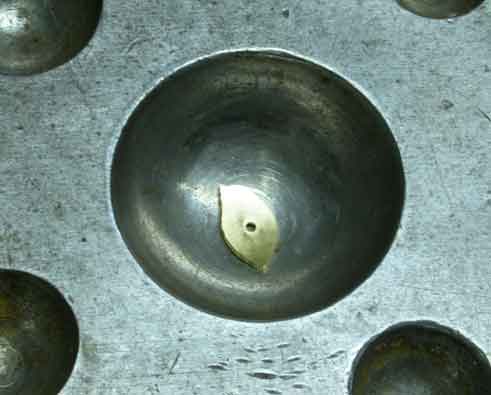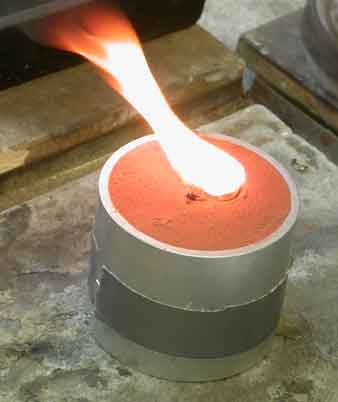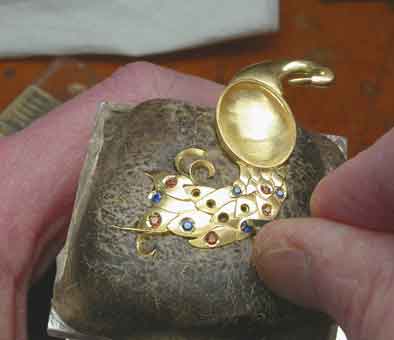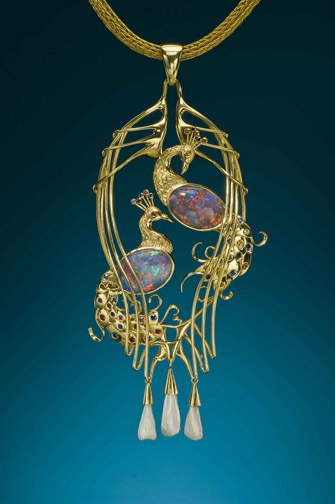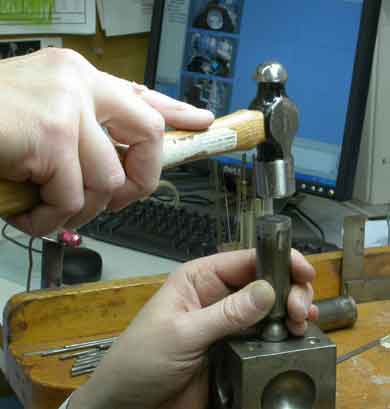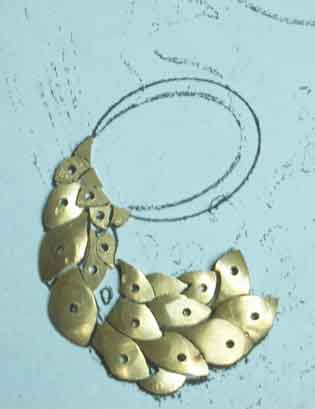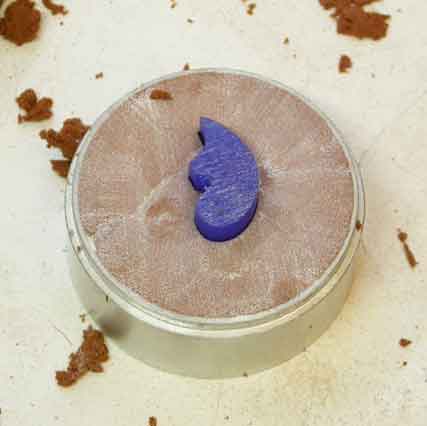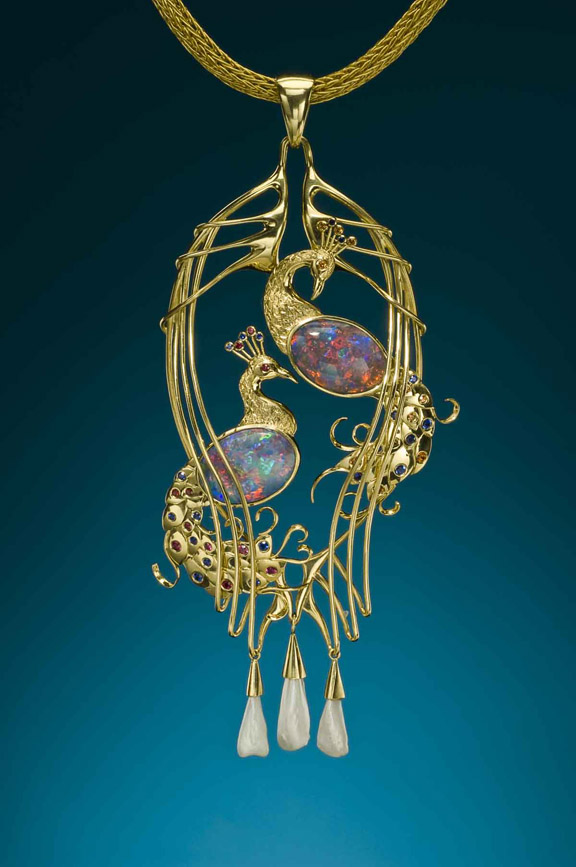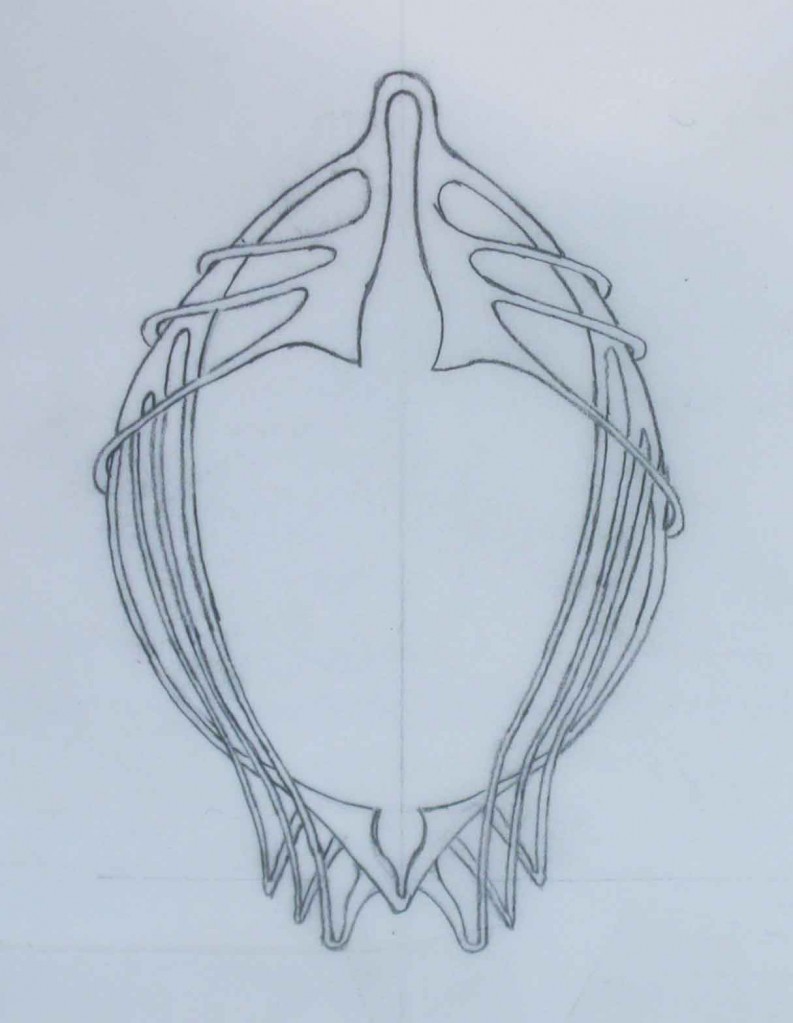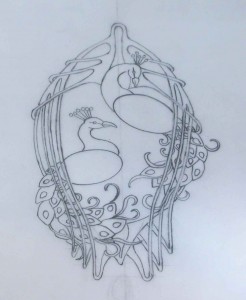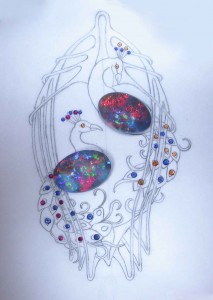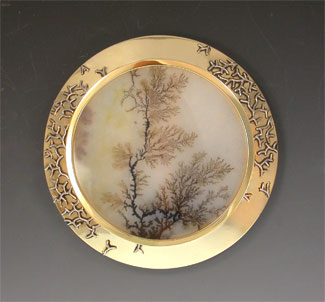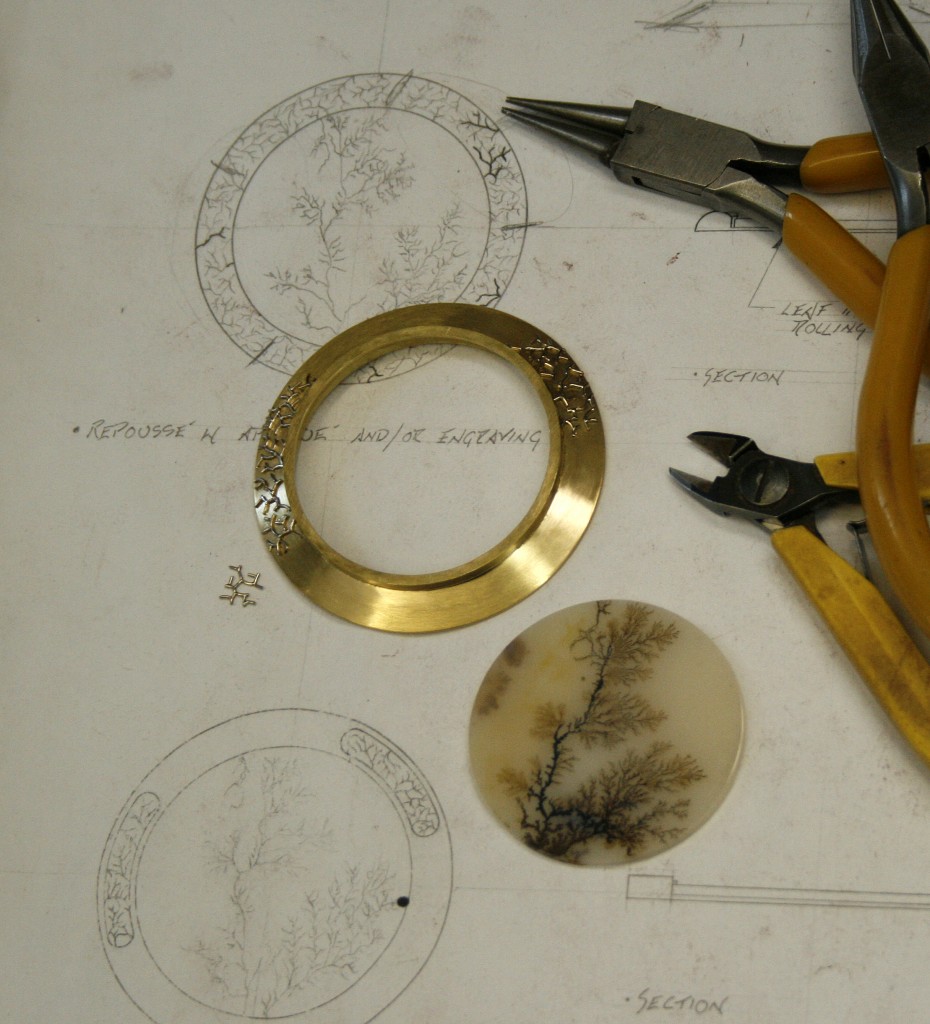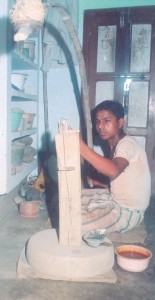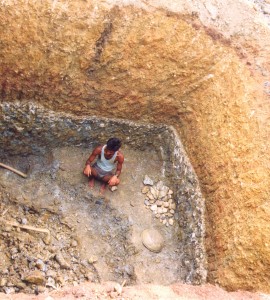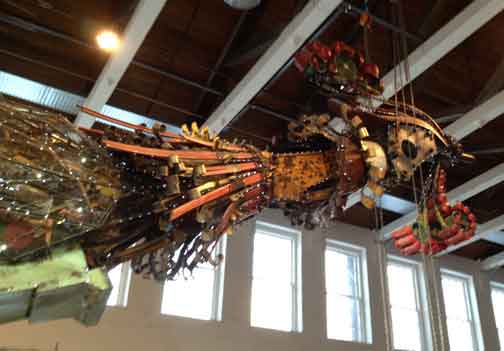
Head of The Phoenix. The total length of this sculpture by Chinese artist Xu Bing is 110 feet. The weight, 12 tons. The head is a commercial jack hammer. Photo: R. W. Wise
by Richard W. Wise, G.G., A.S.G.
©2013 all rights reserved.
At 110 Feet long and weighing in at 12 tons each, the artist Xu Bing’s Phoenix Project currently on view at Massachusetts Museum of Contemporary Art is impressive. It is particularly interesting given my last post in which I asked questions regarding art and the use of precious materials.
Once you get beyond the shear size of them, what is particularly striking about the twin bird sculptures suspended from the gallery ceiling, is the fact that they are totally built from construction waste. That’s right junk!
In my last post, I showed a beginning series of images of a 4 x 1.75″ Peacock Brooch constructed of 22k gold, 18k gold, black opals, rubies & sapphires and asked the rhetorical question, can a piece of jewelry constructed out of precious materials be considered art? Many critics hold that the jeweler’s art, if it is art at all, is a minor one.
So, when my wife Rebekah and I walked into the gallery Sunday, what to my wondering eye did appear but a huge, in fact two huge works of art made exclusively of junk, the very antithesis of or you might say the other side of the coin. Junk had obviously been used as a material to create art, what did that say about the use of gold and gemstones?
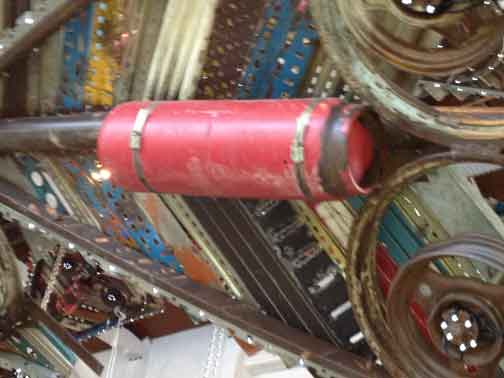
Close up of the wing of the Phoenix, note the use of various types of waste found around construction projects. The artist used re-bar, flashing, discarded gas bottles and shovel blades among other things to construct his birds. Xu Bing lived in the U. S. for many years, when he returned to China he was struck by the magnificence of some of the new buildings going up contrasted with the dwellings of the poverty striken workers who built them. Photo: R. W. Wise
The first thing that struck me as that the constructions themselves were quite beautiful. It was necessary to focus, to draw the mind away from the contemplation of these wonderful works of art to be able to discern the method and materials of their construction. First you see the whole, only later the parts.
What makes a material precious? It is largely a question of attitude. Gold has been valued from the beginning of recorded time. You need only to see and touch a natural gold nugget to understand the material’s appeal. First the color, in its pure form, gold is a striking orange-yellow. Its weight is reassuring, its touch sensual. Are these attributes simply too seductive to the senses, do they submerge the artist’s intention and make it impossible to convey meaning? Certainly it doesn’t help.
Given the tactile and visual qualities of gold and the connotations of wealth associated with it, it is clearly impossible for anyone to view the object qua object without reference to the material of its construction.
When you view Xu Bing’s Phoenix you are struck by his achievement. When we view the Peacock Brooch are we simply overwhelmed by its glitter?
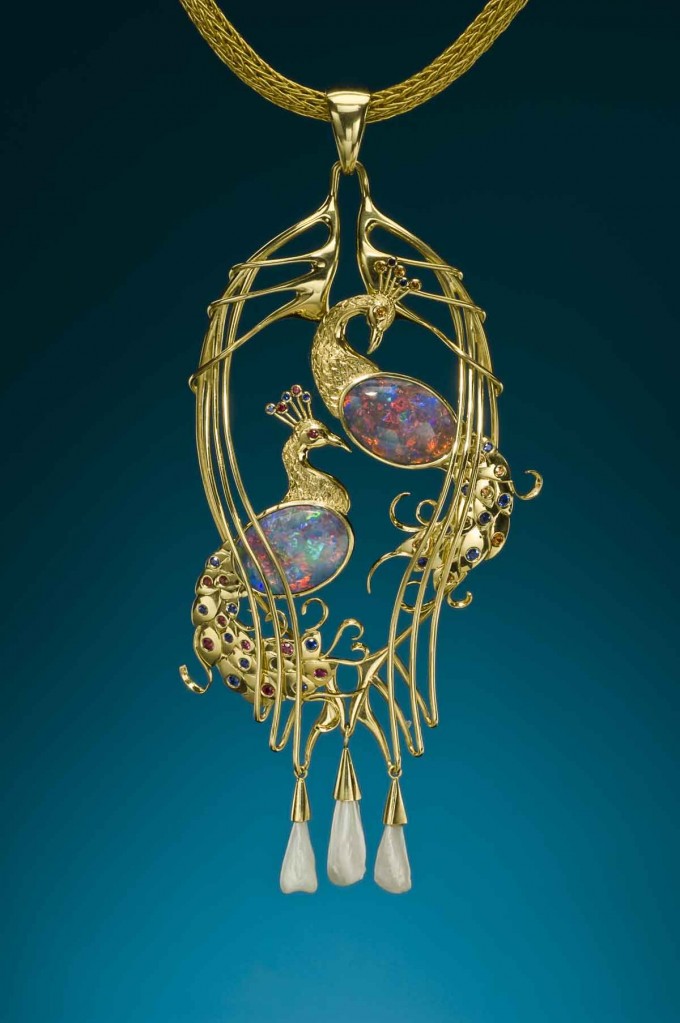
All That Glitters; The Peacock Pendant: 22k gold, 18k gold, opals, rubies, sapphires, spessartite garnets and natural Mississippi Pearls
Still, there is no denying the beauty and appeal of the Peacock Pendant. Each bird appears to float, each has a distinct attitude, the tiny gems twinkle in the light and the peacocks magnificent tails’ wrap themselves provocatively around a golden bower. They eye is, of course, drawn to the center stones. The two opals exhibit a fabulous flashing pallet of color.
NEXT POST, The Making of a Masterpiece VI (Part 2) MORE IMAGES, STAY TUNED.
.
